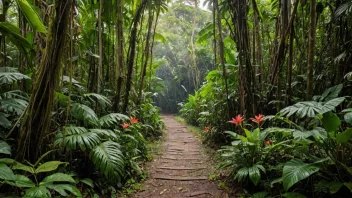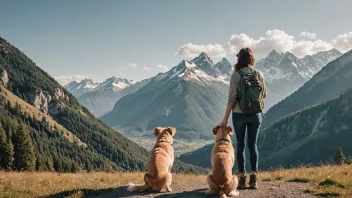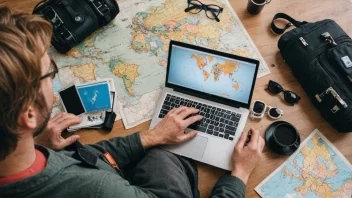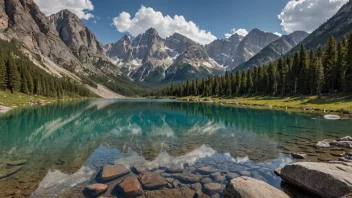Mountain climbing is an exhilarating adventure that combines physical challenge with the beauty of nature. For many, it represents a personal challenge, a way to push one's limits and experience the great outdoors in a unique way. However, preparing for your first ascent can be daunting. From understanding gear and safety to physical training and mental preparation, there’s much to consider. This guide aims to provide a comprehensive overview to help you embark on your mountain climbing journey with confidence and excitement.
Understanding Mountain Climbing
Mountain climbing is a broad term that encompasses various styles and techniques. Whether you are planning a leisurely hike or a technical climb, understanding the different types of mountain climbing is essential.
Types of Mountain Climbing
- Hiking: This is the most accessible form of mountain climbing, suitable for beginners. It typically involves walking on marked trails and does not require specialized gear.
- Scrambling: A step up from hiking, scrambling involves climbing steep terrains where you might need to use your hands for support but is generally not technical.
- Rock Climbing: This involves climbing rock formations and requires harnesses, ropes, and climbing shoes. It can be done indoors or outdoors.
- Ice Climbing: As the name implies, this type involves climbing frozen waterfalls or ice-covered rock faces using specialized tools like ice axes and crampons.
- Alpine Climbing: This is a combination of rock and ice climbing in mountainous regions, often requiring a higher level of skill and experience.
Physical Preparation
Preparation starts with physical conditioning. Climbing requires strength, endurance, and flexibility. Here are some vital fitness components to focus on:
Strength Training
Building strength, particularly in your legs, core, and upper body, is crucial. Exercises such as squats, lunges, and pull-ups can help. Incorporate bodyweight exercises that mimic climbing movements.
Endurance Training
Long-distance running, cycling, or hiking can improve your cardiovascular fitness. Aim for at least 30 minutes of aerobic exercise several times a week. Gradually increase the intensity and duration of your workouts.
Flexibility and Balance
Incorporate stretching and balance exercises into your routine. Yoga can be particularly beneficial, helping you improve your flexibility, balance, and mental focus.
Mental Preparation
Mental toughness is as important as physical training. Climbing can be a mental game, and preparing yourself psychologically will help you manage fear and anxiety.
Visualization Techniques
Visualize yourself climbing successfully. Imagine the moves you will make, the challenges you will face, and the satisfaction of reaching the summit.
Setting Realistic Goals
Set achievable goals for your first climb. This could be completing a specific hike or reaching a particular altitude. Celebrate small victories to build confidence.
Gear Essentials
Having the right gear is crucial for safety and comfort. Here’s a list of essential items you should consider:
Clothing
- Base Layer: Moisture-wicking clothing that keeps you dry.
- Insulating Layer: Fleece or down jackets that provide warmth.
- Outer Layer: Waterproof and breathable jackets and pants.
Footwear
Invest in a good pair of hiking boots or climbing shoes that provide support and traction.
Climbing Gear
If you’re planning on rock or ice climbing, you will need harnesses, ropes, carabiners, and other specialized equipment. Consult with an expert or experienced climber to determine what you need for your specific ascent.
Safety Considerations
Safety cannot be overstated when it comes to mountain climbing. Here are some critical safety tips:
Know Your Limits
Choose climbs that match your skill level. It’s essential to push yourself but equally vital to know when to turn back.
Stay Hydrated and Nourished
Dehydration and fatigue can impair your judgment and physical ability. Carry enough water and energy-rich snacks.
Weather Awareness
Always check the weather forecast before your ascent. Be prepared to turn back if conditions worsen.
Finding the Right Climbing Destination
Choosing the right mountain for your first ascent can significantly affect your experience. Here are some factors to consider:
Accessibility
Select a location that is easily reachable. National parks or local climbing spots can be great starting points.
Guided Tours
If you’re unsure about going solo, consider joining guided tours. They provide expert advice and ensure safety.
Research Routes
Read up on popular routes and obtain maps. Websites and climbing forums can offer valuable insights from seasoned climbers.
Unique Experiences to Consider
Mountain climbing offers unique experiences that go beyond the physical challenge. Consider these enriching aspects:
Cultural Immersion
Many climbs are located in areas rich in culture and history. Engage with local communities, learn about their traditions, and savor local cuisine.
Environmental Awareness
Climbing fosters a connection with nature. Use your experience to advocate for environmental conservation and responsible climbing practices.
Building Relationships
Climbing with friends or joining a climbing group can build camaraderie and create lasting memories.
Conclusion
Preparing for your first mountain ascent involves a blend of physical training, mental preparation, and understanding the gear and safety aspects of climbing. Whether you are hiking a gentle trail or scaling a challenging rock face, the key to a successful climbing experience is preparation. Start small, set realistic goals, and immerse yourself in the community. With the right mindset and preparation, your first ascent can be a rewarding and transformative experience that ignites a lifelong passion for mountain climbing.






